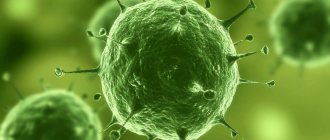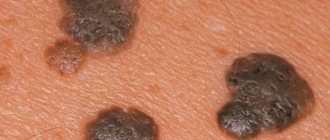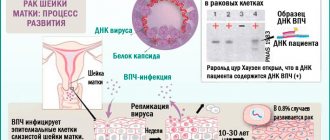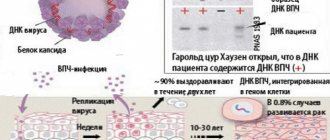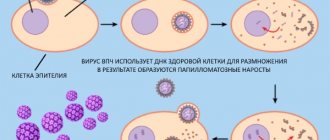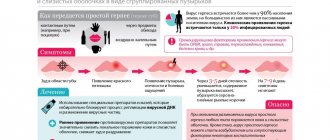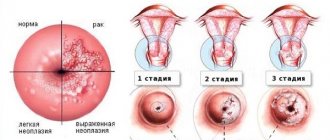Last Updated on 09/16/2016 by
Human papillomavirus type 35 (HPV 35) is a virus with an oncogenic risk. This type of virus is dangerous and can pose a serious threat to the health and life of the body.
Scientists have now determined that there are about 100 different types of HPV. Currently, only some types have been studied in detail; about 80 papillomaviruses have been described. They can cause the development of various diseases: lesions of the skin, mucous membranes, and genital organs. Some types affect the female genital organs quite seriously and can cause the development of dangerous diseases, including cancer. These viruses include HPV 35.
Currently, most women are affected by various types of human papillomavirus. Not everyone follows the treatment; most do not even know about the presence of the virus in their bodies. This disease is second only to genital herpes in the breadth of sexually transmitted diseases affecting the population.
Peculiarities
The virus spreads very quickly, there are many ways of infection. According to WHO statistics, about 60% of the world's population is infected with this disease. Moreover, this figure is growing every year. The reason for this is that people are increasingly engaging in unprotected sexual contacts with untrusted partners. Since the main route of transmission of infection is sexual, the disease is easily transmitted from one person to another, as a result of which more and more carriers appear.
There are other ways of transmitting HPV type 35:
- household - due to the use of someone else's bedding or underwear;
- social - as a result of visiting places such as swimming pools, public restrooms, solariums;
- generic - the virus is transmitted during the birth of a child from the mother.
In addition, there is a risk of self-infection, for example, if a person transfers microorganisms from dirty hands to his genitals.
HPV 35 penetrates into cells, quickly multiplying there and parasitizing. At the same time, it changes the DNA structure of the affected cells. It is this circumstance that contributes to the appearance of malignant neoplasms.
At risk are those people who suffer from immune problems: smokers, alcoholics, patients leading a sedentary lifestyle. The likelihood of the disease also increases if there is no proper treatment for other infectious pathologies.
Where does the papilloma virus come from?
How is HPV infection transmitted? Doctors name the following routes of infection:
- sexual – during vaginal/anal/oral sex;
- contact - when kissing;
- household - through shared dishes, toilet lids and/or hygiene items;
- vertical – transmission of infection to the child from the mother during childbirth.
According to statistics, infection can occur in childhood when receiving microdamages - through scratches/abrasions. HPV infection enters the body, and after the incubation period is completed, it is manifested by the appearance of warts on the skin. The consolation is the fact that papilloma viruses transmitted by contact do not threaten the occurrence of cancer.
Symptoms
The subtlety is that HPV of any type practically does not manifest itself in the form of symptoms. This complicates diagnosis, because the disease can only be detected through tests done in a clinical setting. However, there are pharmacy tests for HPV, but their accuracy is minimal. This leads to the fact that collecting anamnesis during a visit to the doctor practically does not bring any results. The only symptom that almost always appears is genital warts. But they are not always located on the surface of the body; in most cases, their location is in the internal genital organs, for example, the walls of the vagina. And there is little sense in visually studying them, because it is impossible to identify the exact strain based on this characteristic, and the treatment strategy depends on this.
Human papillomavirus type 16 is one of the most dangerous strains. According to some statistics, it affects 60 to 70% of women around the world. You can learn about symptoms that are very difficult to notice, as well as how to treat this disease.
In women, HPV 35 is expressed by the following symptoms:
- painful sensations are felt in the lower abdomen, and sometimes in the lower back;
- urination is accompanied by pain;
- sexual intercourse brings more discomfort than pleasure;
- sexual desire is lost;
- urine contains bloody impurities;
- unusual purulent vaginal discharge with an unpleasant odor appears.
In advanced stages of the disease, constant weakness and drowsiness occur. Sometimes they are accompanied by nausea and dizziness. This occurs due to inflammatory processes during the degeneration of neoplasms into malignant ones.
Men experience other signs of HPV 35:
- condylomas on the head of the penis;
- purulent discharge from the urinary tract;
- pain when urinating;
- weak potency.
Since this virus poses much less danger to men than to women, other symptoms occur very rarely.
Condylomas can occur not only in the genital area, but also in the anus. This usually causes great discomfort.
Reasons for development
To date, scientists have proven the presence of more than 300 types of papillomavirus. Of these, HPV strains can be distinguished with low, medium and high risk of oncogenicity.
Since the disease is transmitted through sexual contact, less often through household contact, by the age of 50, one or more strains of the virus can be detected in almost every person. It is recommended to be tested for HPV once a year or every few years.
HPV (human papillomavirus) are viruses divided into groups and types. A total of 120 of them are known. The types in women (16-56) and in men pose a particular danger to the body, as they can cause serious illness and death. Viruses are transmitted mainly through sexual contact. A person is least likely to become infected through wounds and microcracks.
Once in the body, the papillomavirus produces special substances that facilitate penetration through the intercellular substance and further passage into the basal cells of the dermis. There he lingers. As soon as the papillomavirus DNA enters the human cell nucleus, it begins to rebuild. Before entering the nucleus, no changes harmful to the body occur.
Along with the restructuring process, the cell changes its own DNA and pathogenic growth and reproduction begins. As soon as the processes of change begin, the cells grow and multiply in disorder, which is why neoplasms (condylomas and papillomas) appear on the skin and mucous membranes of the human body, which at first they may be indistinguishable from the natural color of the skin.
Women are most susceptible to the disease; papillomavirus causes diseases associated with the reproductive system, including oncology. The risk of infection is especially high at the beginning of sexual activity. Promiscuous sexual intercourse, neglect of contraceptives - all this can lead to the development of HPV.
Much less often, infections occur through dirty medical devices or during procedures (including cosmetic ones). HPV has an incubation period - usually 15-20 years.
Papillomavirus is divided in most cases into types, including:
- Type 16 – the most dangerous for women; if it enters the body, the risk of genital cancer is the highest;
- Type 18 – also dangerous, causing the appearance of condylomas when it enters a cell;
- Types 31-33 are also oncogenic, more typical when Bowen’s disease occurs and are located in the scaly layer of the epidermis.
- Types 51-56 – medium-high risk of oncology, the disease develops only in an environment favorable for the virus (for example, with reduced immunity).
The latter types are also capable of causing mutations in the female organs, and are the cause of infertility and menstrual irregularities.
Oncogenic classification is the division of papilloma virus types into several large groups, indicating the degree of their danger. This is done in order to have a clear idea of which strains of the virus are dangerous for causing serious diseases and which are not.
Wounds and scratches on the surface of the skin and mucous membranes serve as a kind of window for infection. The attachment and rapid development of the virus is explained by the similarity of harmful microorganisms with the epithelial cells of the human body. During division, the viral DNA (episome) is transferred to the daughter cell. According to this principle, excess tissue increases.
Diagnostics
Despite the “sluggish” symptoms, detecting the virus in a person is quite simple. There are a number of tests that can not only detect the causative agent of the disease, but also determine its DNA, which is necessary to determine its sensitivity to antibiotics, and also find out how dangerous the disease is in each specific case:
- PCR diagnostics. This method allows you to determine the extent of infection in the body. The accuracy of the method is quite high, but errors are common - it is not always possible to determine the exact strain of HPV.
- Sowing. The biomaterial taken from the patient is “grown” in an artificial nutrient medium. The method requires a decent amount of time, but its accuracy is close to 100%. In addition, culture can accurately determine the type of virus and assess its sensitivity to drugs.
- Visual gynecological examination. Allows you to detect the presence of condylomas on the genital organs. The accuracy is minimal - this examination does not determine the type of HPV; it is impossible to prescribe treatment based on the results of this examination.
- Biopsy. It is prescribed rarely and only if it is necessary to establish the nature of the neoplasm. This is done in the last stages of illness, when the occurrence of cancer becomes quite real.
A complete blood test can theoretically detect HPV 35, although this happens extremely rarely. As a rule, it reveals only concomitant inflammatory processes that accompany the disease in question.
How dangerous are oncogenic strains of the human papillomavirus - methods of prevention and treatment
Today, almost every person over the age of 50 has either had a human papillomavirus infection or is a carrier of it. Depending on the HPV group, the disease can manifest itself differently.
To protect yourself from adverse consequences, you need to be tested for the presence of the virus in your body every three years. Tests can be taken without a doctor’s referral, but if the result is positive, urgent consultation with a specialist is necessary regarding effective treatment and further prevention of relapse.
HPV type in women (16 and others) and in men (it is believed that 31-33 are the most dangerous for the male body) can be diagnosed using different methods. However, diagnosis of certain strains is rarely sought. Most often, people come to the doctor to remove tumors, since they bring discomfort and aesthetic disgust.
But when growths appear, you should be examined and tested - further development of the virus seriously threatens the body. It is recommended to carry out diagnostics immediately. People with the HPV virus are referred to a urologist, gynecologist, cosmetologist and venereologist.
Treatment
It is impossible to completely remove the virus from the body; you can only weaken it by stopping the development of the disease. Therapy must be comprehensive, otherwise there will be no result. Treatment includes:
- Taking antibiotics. Doctors usually prescribe Panavir, Epigen and Isoprinosine.
- Strengthening the immune system. A very important component, since the body’s own defenses fight the virus more effectively than any antibiotics. For this, drugs such as Immunal, Reaferon, Polyoxidonium are suitable. Please note that these products also work as antiviral drugs.
- Removal of condylomas and papillomas. This must be done, but only in a clinical setting. Both the classic surgical method and more “advanced” methods are used, for example, cryodestruction, chemotherapy, electrocoagulation.
The use of folk remedies is allowed only to increase the level of immune protection. They cannot stop the development of the disease, much less remove the virus from the body.
How to treat human papillomavirus
Existing strategies to combat the papilloma virus cannot be called perfect, but there are a number of techniques that provide treatment effectiveness of up to 90%. To successfully treat HPV, you must first pass all the necessary tests, and then get the doctor’s instructions and follow them. When prescribing medications and procedures to a patient, doctors study his genotype in detail.
For many years, the human papillomavirus has remained one of the sexually transmitted diseases that cannot be completely cured - the virus does not die from exposure to antibacterial drugs.
In addition, diagnosing this disease is very difficult - there are practically no symptoms, and general tests do not detect the microorganism. The main danger of this is that the lack of proper treatment can lead to the development of cervical cancer, as well as infertility.
Is it possible to avoid infection, how do doctors identify pathology, and is it possible to reduce the risk of complications?
Consequences and danger
HPV 35 is an oncogenic virus. It promotes the development of cancer. While men are relatively safe, women are at great risk. Without treatment, the emergence of malignant tumors is a matter of time. This happens due to the fact that microorganisms change the DNA structure of the affected cells, “forcing” them to actively reproduce. As a rule, the process of developing a cancerous tumor takes at least 5 years from the moment of infection, and then in the complete absence of any therapy.
In addition, HPV 35 causes:
- infertility;
- impotence;
- weakening of sexual treatment.
This can all be treated, but it is much easier to prevent the development of HPV than to deal with complications. To do this, it is enough to follow the rules of personal hygiene and avoid casual sex.
By watching this video, you can learn about the papilloma virus, as well as its manifestations, what treatment methods are available and how you can protect yourself from this disease.
HPV type 35 in women and men: what it is and how human papillomavirus type 35 is treated
The most common viral infection of the genitourinary tract in humans is the human papillomavirus. There are more than a hundred of its varieties, about 80 are pathogenic.
Each species contains special DNA, which includes a gene responsible for the process of cell division. The virus causes changes in the skin and mucous membranes. Typical manifestations are warts, papillomas, and condylomas.
HPV can provoke the development of cancer and other pathologies. According to doctors, more than 70% of the adult population is infected with papillomavirus.
- Dermatologist of the highest category Inna Vladimirovna
- 23148
- Update date: October 2019
Among other strains of papillomavirus, HPV type 35 has an average risk of developing cancer, but is not absolutely safe. If this virus is detected, it is necessary to remove tumors on the skin and, if necessary, undergo complex drug treatment.
About 70% of the adult population of the planet are carriers of HPV, according to WHO. There are many strains of this virus, which differ in the type of lesion, localization, and tendency to malignancy.
The most dangerous types for both women and men are types 13 to 33, as they increase the risk of cancer. Types 51-56 are also considered dangerous, although not as aggressive, but this does not mean that if you have the papillomas virus, you don’t have to worry about your health.
